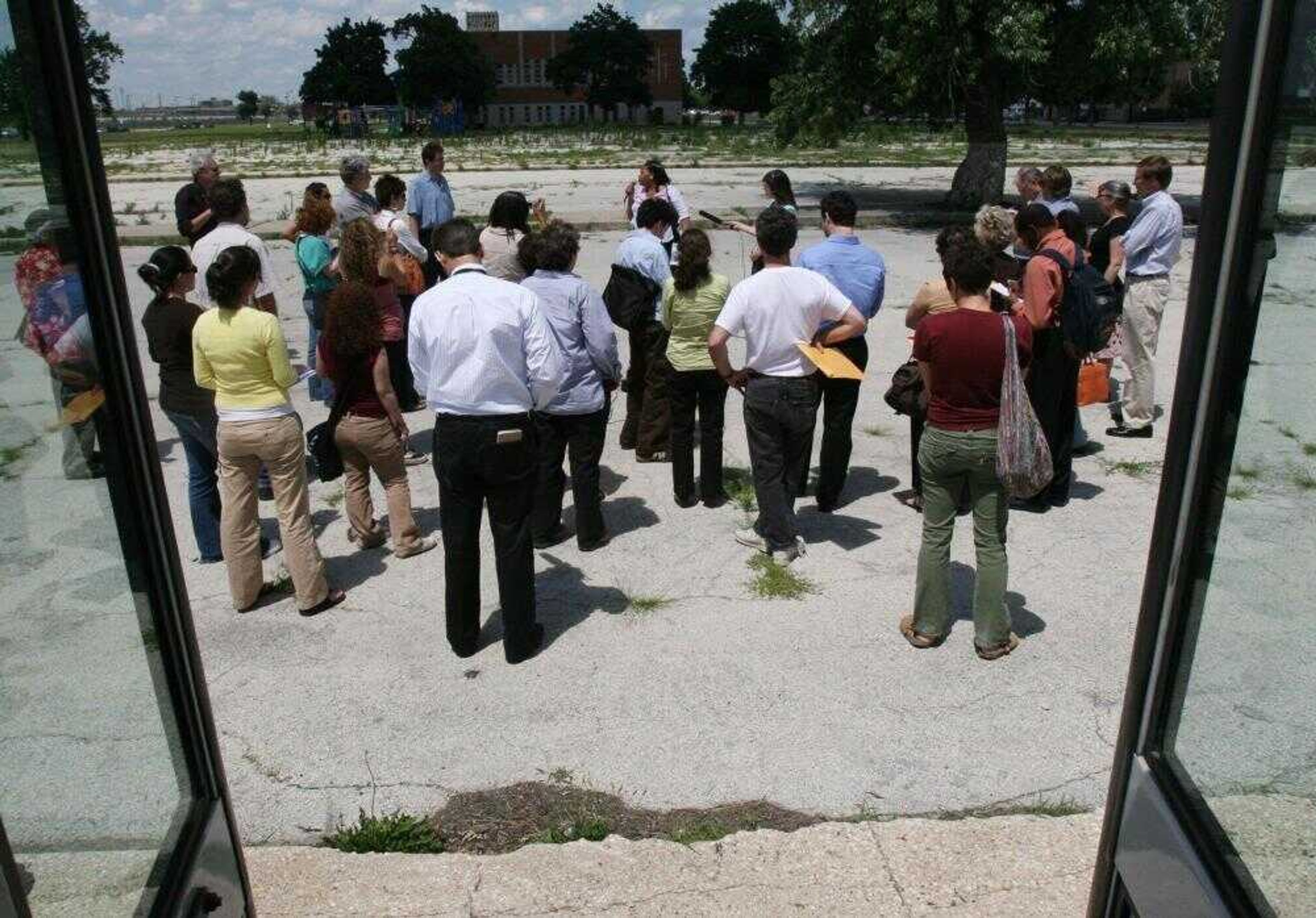Chicago's housing projects host bus tour
CHICAGO -- The yellow school bus rumbles through vacant lots and past demolished buildings, full of people who have paid $20 for a tour of what was once among the most dangerous areas of this or any other city in the United States. But for the woman with the microphone, this "Ghetto Bus Tour" isn't just another way to make a buck from tourists. ...
CHICAGO -- The yellow school bus rumbles through vacant lots and past demolished buildings, full of people who have paid $20 for a tour of what was once among the most dangerous areas of this or any other city in the United States.
But for the woman with the microphone, this "Ghetto Bus Tour" isn't just another way to make a buck from tourists. It's the last gasp in her crusade to tell a different story about Chicago's notorious housing projects, something other than well-known tales about gang violence so fierce that residents slept in their bathtubs to avoid bullets.
"I want you to see what I see," says Beauty Turner, after leading the group off the bus to a weedy lot where the Robert Taylor Homes once stood. "To hear the voices of the voiceless."
Turner, a former Robert Taylor Homes resident, has been one of the most vocal critics of the Chicago Housing Authority's $1.6 billion "Plan for Transformation," which since the late 1990s has involved demolishing public housing high-rises and replacing them with mixed-income housing.
Turner believes that the city that decades ago left residents to be victimized by violent drug-dealing gangs is now pushing those same people from their homes without giving them all a place to go.
"I have people becoming homeless behind this plan, people that's living on top of each other with relatives," said Turner, who has been giving informal tours for years. "For some it has improved their conditions, but for the multitude of many it has not."
For their part, Chicago Housing Authority officials say Turner's tour distorts both CHA's history and what it looks like today, that she glosses over the failures of public housing. They dispute her contention that there are not enough homes for those whose homes were torn down, saying that the 25,000 units being built or rehabbed are enough for the number of people whose buildings were demolished.
On the tour, Turner downplays the violence that plagued the projects for years, telling the group that all those news reports distorted what day-to-day life was like.
"All the horror stories that you heard about in the newspapers, it was not like that at all," she says.
But the stories loom over the tour. They are impossible to forget. By the time the CHA started pulling down or rehabilitating the projects in the late 1990s, each one had its own headlines that spoke to the failure of public housing in Chicago.
Still, Turner is determined to tell anyone who will listen that the city has a duty to keep the community law-abiding citizens of public housing built up over the decades, despite their challenges. That, she fears, is what is being lost as the decrepit buildings fall and outsiders move in, and that's why she'll keep giving the bus tour as long as there is interest.
"People that come in don't want to look across the street and see seven little black churches in a three-block radius," she said. "What they want to see is a Dominick's and sushi joints and a Starbucks."
Connect with the Southeast Missourian Newsroom:
For corrections to this story or other insights for the editor, click here. To submit a letter to the editor, click here. To learn about the Southeast Missourian’s AI Policy, click here.








